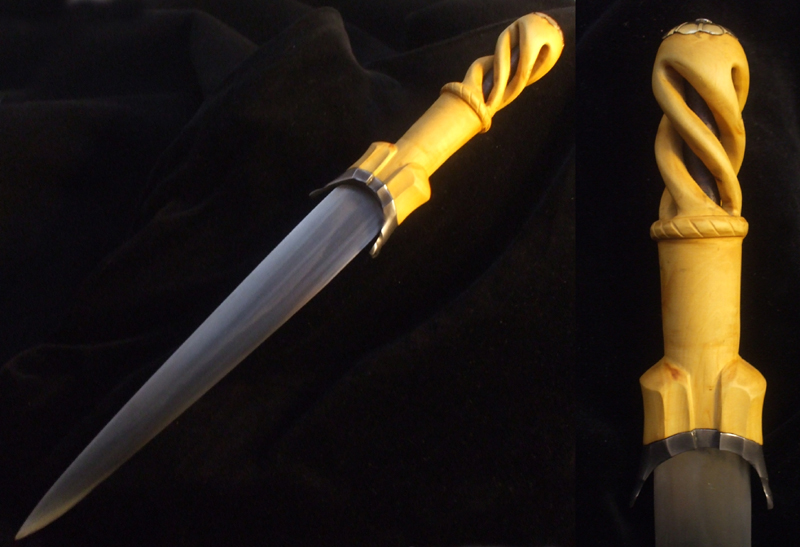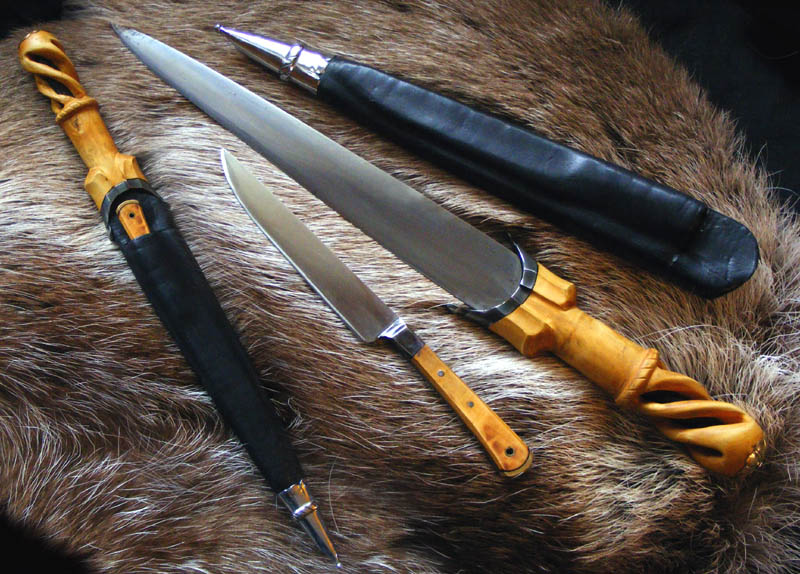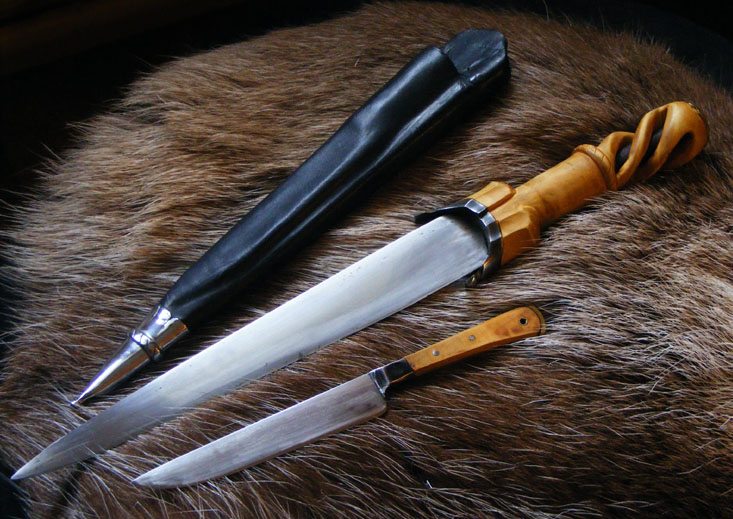Another piece that couldn't find an owner earlier this month at the Pontoise market - though I admit it would look more 'complete' with a scabbard, something I'm hoping to get done before year's end.
Measurements are 33.5 cm OAL, the blade is 24.5 cm and 6.5 mm thick at its base.
I opted for a differential heat-treating - also (but not only) to echo the construction found in period blades that associated a hardened, steel edge with a soft, unhardened iron back - the difference being that at that time the steel edge would be welded on the iron back (or core) to save steel as it was considerably more expensive than iron. You can see the wavy line resulting from this differential hardening process on the blade.
The main inspiration for the handle was this piece :
http://collection.musenor.com/application/mot...vre=394721
..currently kept in the Hôtel Sandelin Museum in Saint Omer, France. The original had a copper tube inside a bone handle, but I preferred boxwood over the latter as it was at the time more readily available to me. Besides, other dagger showing a similar construction or shape use different types of wood for their handles.
The inside tube was made of carefully hand-turned walnut wood that would closely fit in the boxwood handle. Making the twisted part was a time-consuming process I must say, but full of lessons.
The guard was hand-forged and then filed to shape in mild steel, then given a surface treatment resulting in a nice, dark patina.
The Saint Omer dagger also had a two-edged blade, but ballock daggers of a similar type show variations in terms of blade shapes so associating it with a single-edged blade didn't look like nonsense (your bview might vary on that).
The end cap is brass, hammered and filed to shape.
I'll post more pics when the scabbard is finished. Although I'm hesitating on either giving it a simple, smooth, plain appearance or instead to go for a fancily decorated sheath that would match the handle...and what of a by-knife ? ...Ah, dilemmas, questions, torture for my poor brain....
Anyway : still available.
Cheers
Fab


